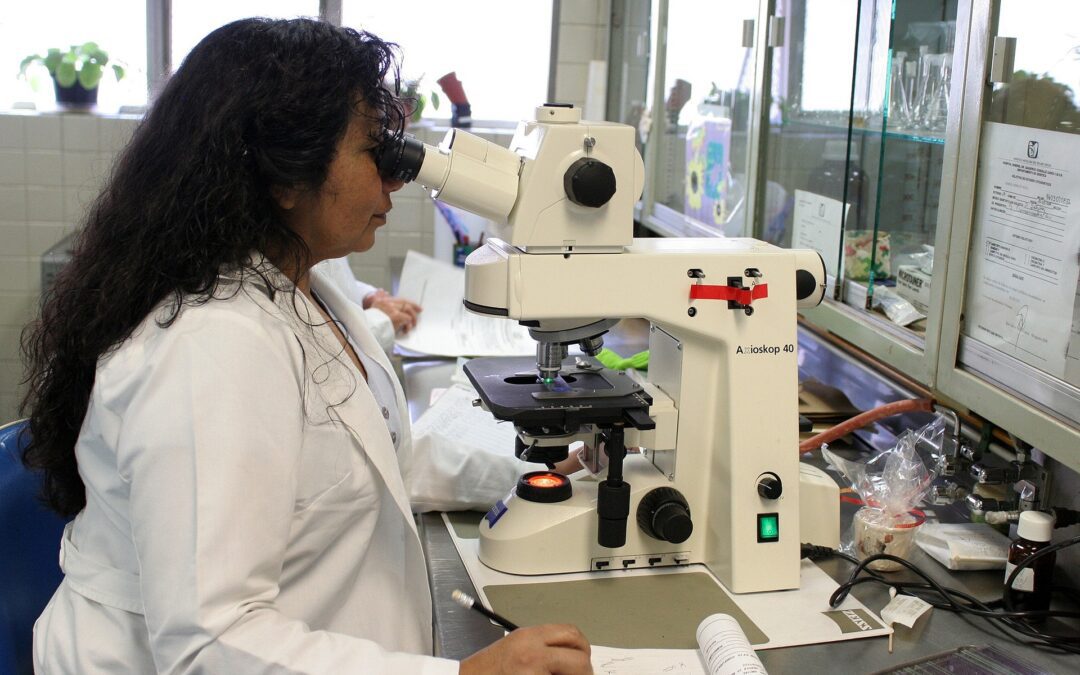What is the significance of autoantibodies in predicting type 1 diabetes?
The presence of autoantibodies help determine the risk for type 1 diabetes. The presence and persistence of two or more autoantibodies defines Stage 1 type 1 diabetes and means that the individual has a >70% chance of advancing to Stage 2 type 1 diabetes within several years. However, the levels of T1D-associated autoantibodies may increase or decrease depending on when the sample was collected as the patient’s immune system changes over time. In addition, once an individual initiates insulin therapy, anti-insulin antibodies appear as a part of a normal immune response, even if they were not present originally.
There are many different ways to detect whether or not a sample contains autoantibody biomarkers. Enable Biosciences uses Antibody Detection by Agglutination-PCR (ADAP) technology to detect the presence of anti-GAD, anti-IA2, and anti-Insulin antibodies.
What is Antibody Detection by Agglutination-PCR (ADAP) and T1Define?
ADAP is a novel immunoassay technology that uses polymerase chain reaction (PCR) to detect disease-related autoantibodies. Because it uses PCR, it is highly analytically sensitive and has been used to detect a wide variety of antibody biomarkers in clinical and research settings.
T1Define is the trademark of the type 1 diabetes test that uses ADAP technology. It is currently available as a Lab-Developed Test (LDT) under Enable Biosciences’ certification as a high-complexity CLIA and CAP-certified laboratory.
ADAP may detect lower levels of autoantibodies than other assays, though the clinical significance of very low levels of T1D autoantibodies is unclear.
What validation has T1Define undergone?
ADAP has been validated using thousands of patient samples in studies that have been published in peer-reviewed journals:
1. Tsai, Cheng-ting, et al. “Ultrasensitive antibody detection by agglutination-PCR (ADAP).” ACS Central Science 2.3 (2016): 139-147.
Highlights:
▪ ADAP detects disease-related antibodies with 10,000x improved analytical sensitivity
2. de Jesus Cortez, Felipe, et al. “Sensitive detection of multiple islet autoantibodies in type 1 diabetes using small sample volumes by agglutination-PCR.” PloS One 15.11 (2020): e0242049.
Highlights:
▪ 858 serum samples from 7 cohorts analyzed by ADAP and compared to the gold standard radiobinding assay.
▪ Mean overall agreement with RBA was 91%
▪ Mean sensitivity across cohorts was 96%
▪ Mean specificity across cohorts was 97%
▪ ADAP showed the highest sensitivity of all assays at 95% specificity for GAD and IA2 in the 2018 Islet Autoantibody Standardization Program. This is an international blinded proficiency testing program for labs performing islet autoantibody assays.
▪ In at-risk patients, ADAP identified more triple positives than radiobinding assay (RBA)
3. de Jesus Cortez, Felipe, et al. “Automation of a multiplex agglutination-PCR (ADAP) type 1 diabetes (T1D) assay for the rapid analysis of islet autoantibodies.” SLAS technology 27.1 (2022): 26-31.
Highlights:
▪ ADAP T1D autoantibody analysis is automatable, and a single machine can process up to 50,000 tests/year while using <6 microliters of sample.
4. de Jesus Cortez, Felipe, et al. “Multiplex agglutination-PCR (ADAP) autoantibody assays compared to radiobinding autoantibodies in type 1 diabetes and celiac disease.” Journal of Immunological Methods (2022): 113265.
Highlights:▪ ADAP T1D autoantibody analysis is comparable to the gold standard radiobinding assays while only using <4 microliters of sample.
What clinical evidence exists about the performance of the T1Define assay used by this service?
The technical performance of the at-home collected dried blood spot assay was established by a validation study (unpublished data available upon request, email clinical@enablebiosciences.com).
Overall Performance:
o >95% sensitivity (<5% false negative rate, 20/20 true positives assigned “detected” in validation study).
o 97% specificity (3% false positive rate, 33/34 true negatives assigned “not detected” in validation study).
o R = 0.97 correlation between serum and dried blood spot samples collected from the same individual at the same time (R = 1 is perfect correlation)
Does T1Define predict diabetes?
Clinicians and scientists use two parameters to help decide whether or not a test can predict disease.
The first is the Positive Predictive Value. This value is the percentage of individuals that test positive, and then actually progress to type 1 diabetes.
● The positive predictive value (PPV) of the test performed on serum samples was evaluated to be 66% using previously collected retrospective samples from the Diabetes Prevention Trial of Type 1 Diabetes study (DPT-1, https://repository.niddk.nih.gov/studies/dpt-1/, unpublished data available upon request). The PPV may be different for samples collected on dried blood spots.
The second is the Negative Predictive Value. This value is the percentage of individuals that test negative, but then never progress to type 1 diabetes.
● The negative predictive value (NPV) of the test as performed on serum samples was evaluated to be 93% using previously collected retrospective samples from the Diabetes Prevention Trial of Type 1 Diabetes study (DPT-1, https://repository.niddk.nih.gov/studies/dpt-1/, unpublished data available upon request). The NPV may be different for samples collected using dried blood spots.
● Assay signal intensity and cutoff thresholds are available upon request from an authorized clinician. As the assay is clinically validated as a qualitative assay (detected/not detected), signal intensity measurements are provided only as a courtesy and have not been clinically validated to be cross-comparable to other assay methods.

